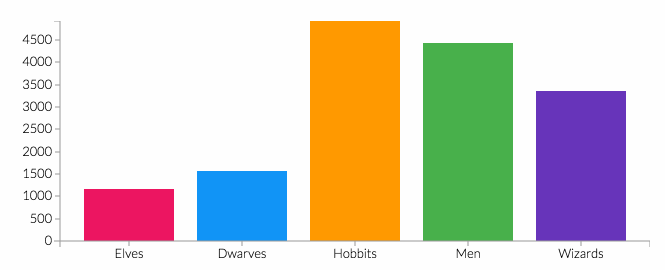MENYELISIK DIKSI TENTANG AKHLAK MULIA DALAM SENANDUNG DIWAN IMAM SYAFI’I TERJEMAHAN IMAM AHMAD IBNU NIZAR
DOI:
https://doi.org/10.33853/istighna.v5i2.209Keywords:
Diksi, Akhlak Mulia, Syair ArabAbstract
A writer or poet must be familiar with the term diction or word choice. Diction is an important element in literary works that the author uses to convey a message to the reader, another meaning is that the existence of diction or vocabulary selection will make it easier for the reader to accept what the author conveys. Word selection is used so as not to cause different views between the author and the reader, as well as the suitability of words in a piece of writing. The appropriate word will build an atmosphere in a literary work, besides the excessive use of vocabulary will make it difficult for the reader to interpret the message of the author. The term use of diction is not very well known by the general public. For this reason, with this research, it is hoped that it will be able to introduce and enrich vocabulary through diction to the general public. In most of the verses asy-Syafi'i contain life instructions, noble behavior for a Muslim, wisdom, various favors, and the nature of zuhud in the world. The purpose of this writing is to find out and describe the use and type of diction in the verses of Diwan Imam Syafi'i, with a qualitative descriptive method using stylistic studies. The results of this study show that translators use words that are synonymous with the original verse to simplify the meaning of each translation.
Downloads
References
Ardika, I Wayan, Asiknya Menulis Puisi (Bali: Grapena Karya, 2020)
Citraningrum, Dina Merdeka, ‘Menulis Puisi Dengan Teknik Pembelajaran yang Kreatif’, Belajar Bahasa, 1.1 (2016), 82–90 <https://doi.org/https://doi.org/10.32528/bb.v1i1.75>
Darmawati, Besse, ‘Menggugah Identitas Kebangsaan Melalui Puisi Awaken The National Identity Through Poem’, JENTERA: Jurnal Kajian Sastra, 6.1 (2017), 42–63
Hanum, Inayah, ‘Pembelajaran Aktif Sebagai Model Dalam Menulis Narasi’, Jurnal Pendidikan, 2 (2012)
Hasibuan, A L, ‘Materi Ajar Teori Sastra Berbasis Syair Keagamaan’, Prosiding Seminar …, 2.2 (2019), 815–19 <https://e-prosiding.umnaw.ac.id/index.php/penelitian/article/view/282>
Hatmo, Kenang Tri, Keterampilan Menulis Bahasa Indonesia (Klaten: Penerbit Lakeisha, 2021)
Hermansyah, and Zulkhairi, Transformasi Syair Jauharat At-Tauhid Di Nusantara (Bali: Pustaka Larasati, 2014)
Ibda, Hamidulloh, Bahasa Indonesia Tingkat Lanjut Untuk Mahasiswa Dilengkapi Caturtunggal Keterampilan Berbahasa, ed. by Zaidatul Arifah (Semarang: CV. Pilar Nusantara, 2019)
Kesarwani, Vaibhav, Diana Inkpen, and Chris Tanasescu, ‘#GraphPoem: Automatic Classification of Rhyme and Diction in Poetry’, Interférences Littéraires/Literaire Interferenties, 25, 2021, 218–35
Lafamane, Felta, ‘(Puisi, Prosa, Drama) Felta Lafamane Memadatkan Segala Unsur Bahasa . 1 . Herman Waluyo : Pengertian Puisi Menurut Herman Waluyo Ialah Karya Sastra Tertulis Yang 1 ) Puisi Lama’, 2020 <https://doi.org/https://doi.org/10.31219/osf.io/bp6eh>
Mamik, Metodologi Kualitatif (Sidoarjo: Zifatama Publisher, 2015)
Mardawani, Praktis Penelitian Kualitatif Teori Dasar Dan Analisis Data Dalam Perspektif Kualitatif (Yogyakarta: Deepublish, 2020)
Nugraheni, Aninditya Sri, Bahasa Indonesia Di Perguruan Tinggi Berbasis Pembelajaran Aktif (Jakarta: Prenadamedia Group, 2019)
Pradopo, Rachmat Djoko, Beberapa Teori Sastra Metode Kritik Dan Penerapannya (Yogyakarta: UGM Press, 2021)
Rosa, Fitria, Neni Hermita, and Achmad Samsudin, Karya Sastra Melayu Riau (Yogyakarta: Deepublish, 2017)
Solihati, Nani, ‘Penyimpangan Bahasa Puisi Dalam Sastra Siber’, BAHTERA : Jurnal Pendidikan Bahasa Dan Sastra, 13.1 (2014), 40–49 <https://doi.org/10.21009/BAHTERA.131.05>
W.S., Lianawati, Menyelami Keindahan Sastra Indonesia (Jakarta: Bhuana Ilmu Populer, 2019)
Widodo, ‘Unsur – Unsur Intrinsik Sya’ir Arab1’, Jurnal Pedagogy, 10.1 (2017), 1–12
Downloads
Published
How to Cite
Issue
Section
License
Copyright (c) 2022 Tiara Akhwatunnisa

This work is licensed under a Creative Commons Attribution-ShareAlike 4.0 International License.
Copyright Notice
Authors hold and retain copyright and grant the journal right of first publication with the work simultaneously licensed under a http://creativecommons.org/licenses/by-sa/4.0that allows others to share the work with an acknowledgment of the work's authorship and initial publication in this journal.

This work is licensed under a Creative Commons Attribution-ShareAlike 4.0 International License.
















